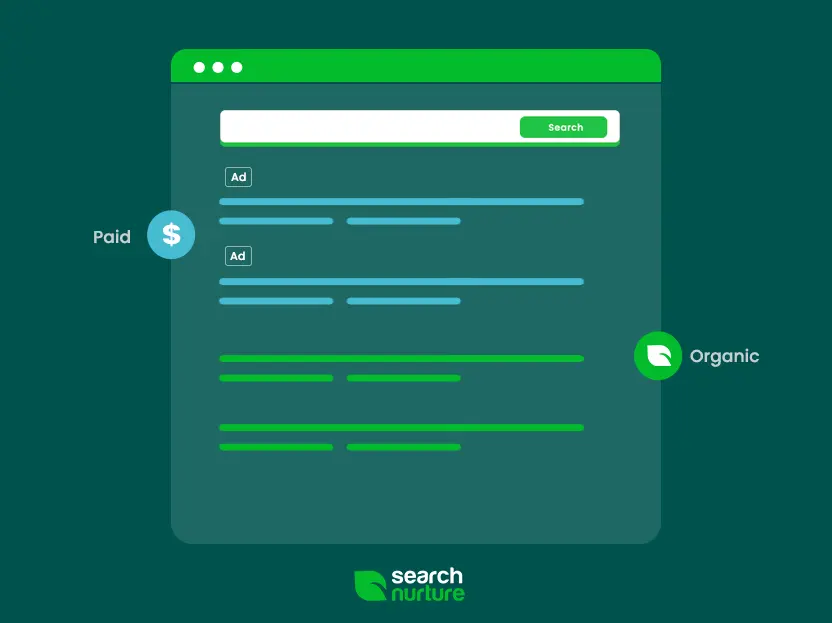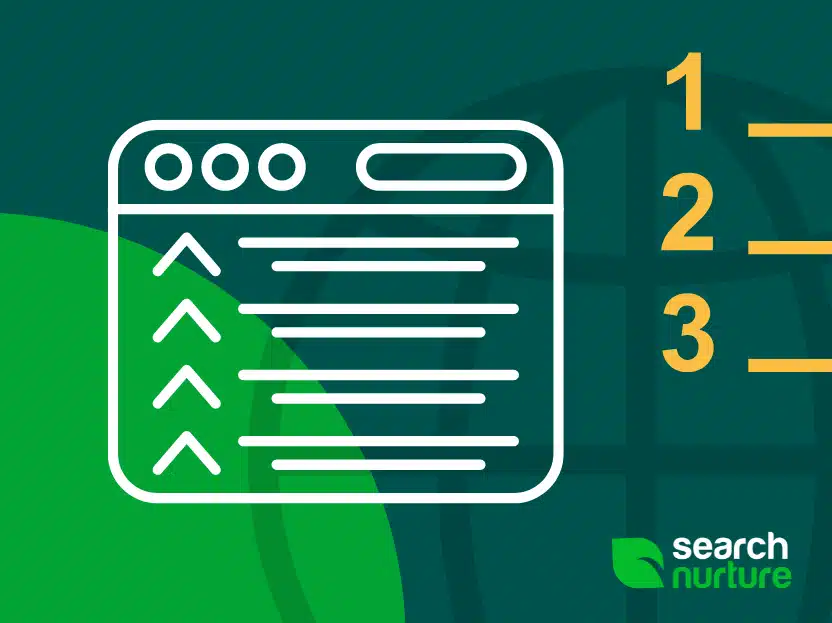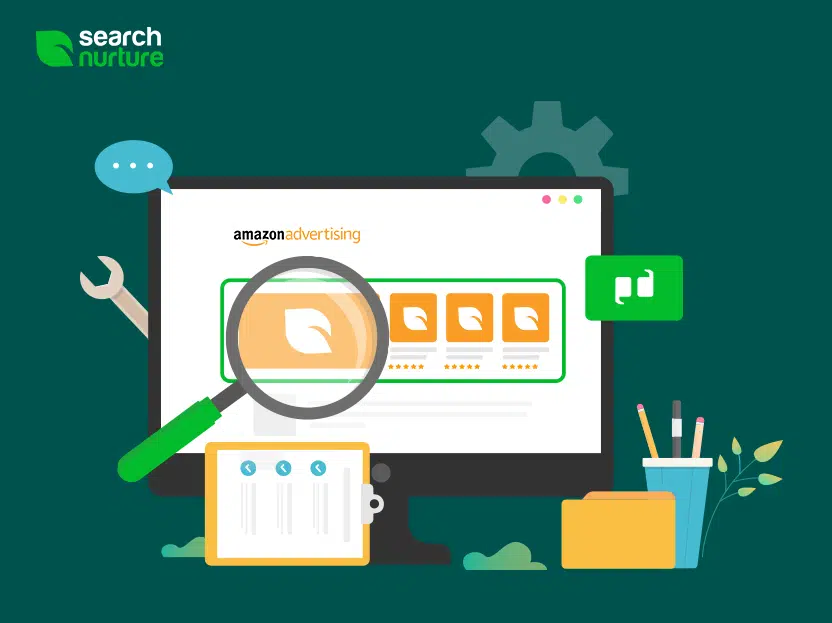Key Takeaways:
- SEO is a vital factor in a site’s visibility in search engines in 2024
- SEO audits help eCommerce sites strategize their ads for visibility and conversions
- On-page and off-page SEO audits address different elements of site design
- Any eCommerce website can benefit from a retail SEO checklist
To compete in an eCommerce market projected to exceed 22% of all retail sales worldwide by 2023, many eCommerce sites prioritize style over substance, focusing on their UX but neglecting SEO in their designs.
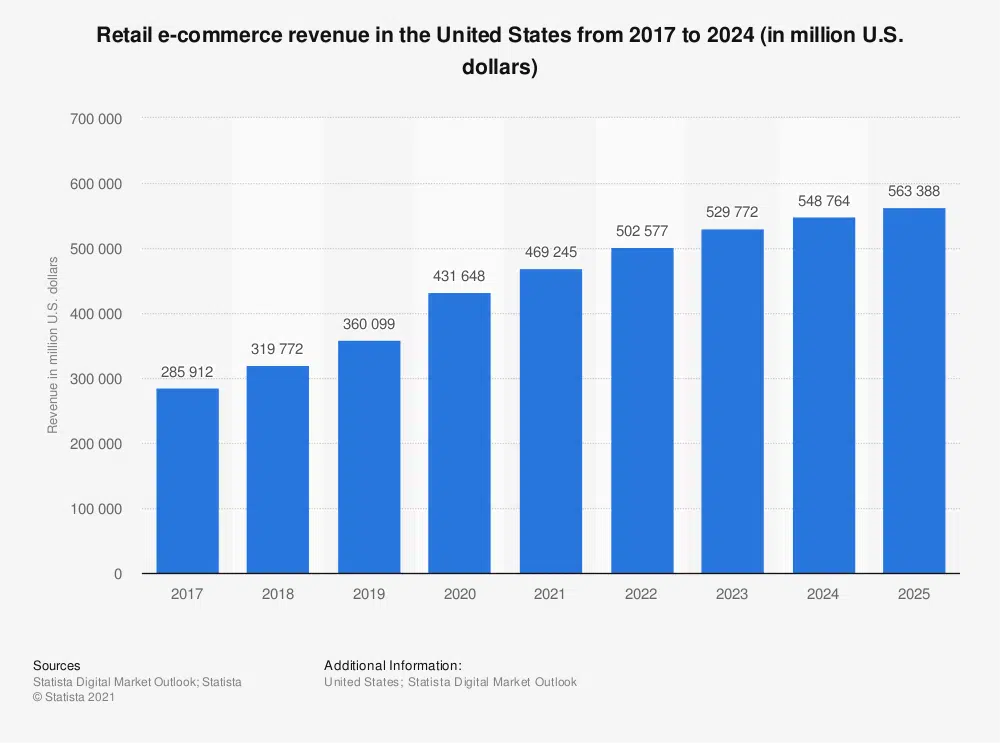
Source: Statista
Great imagery and a fancy user interface provide a flash-in-the-pan visual incentive to stay on a site. But SEO drives users to the site in the first place – organic and paid search results accounted for 68% of website traffic in 2020. Since SEO determines how well a site’s content is discoverable by search engines, it remains the number one factor in increasing visibility and conversions for eCommerce sites.
In this article, we present an eCommerce SEO audit checklist, which elaborates on the components of eCommerce SEO and the process of conducting an SEO audit for new pages as well as improving old websites for the modern day.
Why Do I Need an eCommerce SEO Audit?
Exponential increases in eCommerce traffic have occurred as a result of changing technologies as well as a shift in buying behavior brought on by the COVID-19 pandemic. Despite the temporary increase of the pandemic subsiding as people return to normal shopping activities, Salesforce studies show that many consumers will not completely revert to their pre-pandemic shopping methods.

Source: Statista
Even in this period of growth, the majority of eCommerce sites struggle to compete with industry titans like Amazon, as well as popular brick-and-mortar stores like Walmart whose eCommerce ventures benefit from their brand recognition. Knowing this, an SEO audit guide becomes a vital tool for lesser-known eCommerce brands to develop visibility and increase conversions in a competitive virtual marketplace.
A viable SEO strategy can improve the operations of a site as well as its searchability, though this requires an in-depth understanding of what constitutes good SEO and how it can be refined. Google uses hundreds of metrics to rank its search results (these metrics are called “ranking signals”). It is not necessary to know them all to improve your SEO.
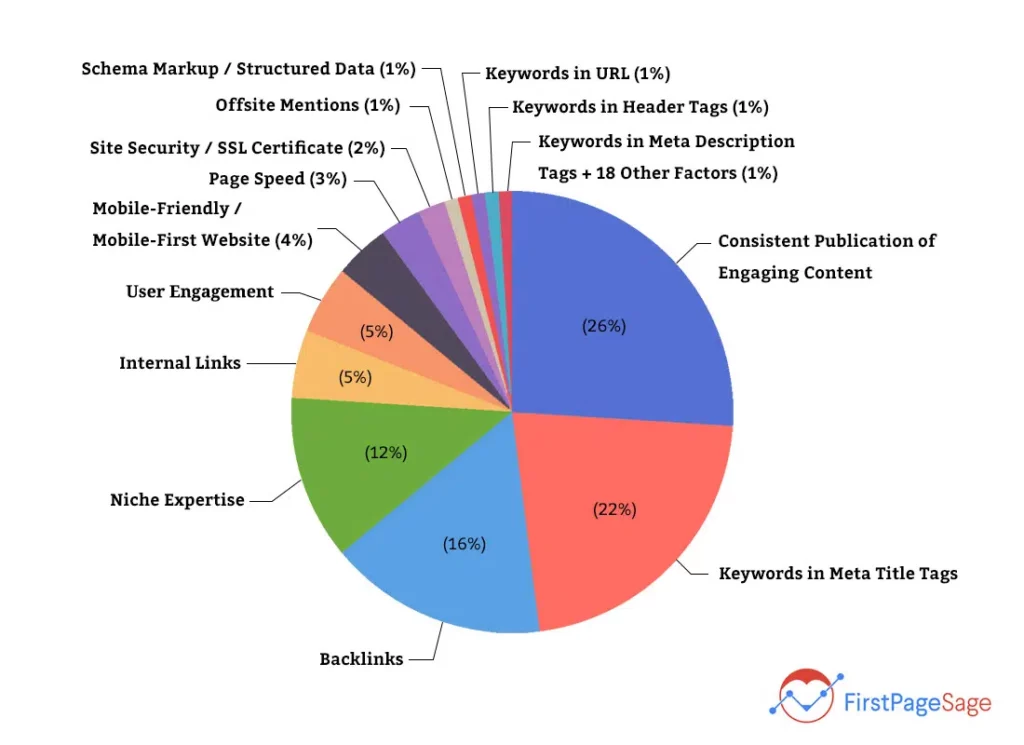
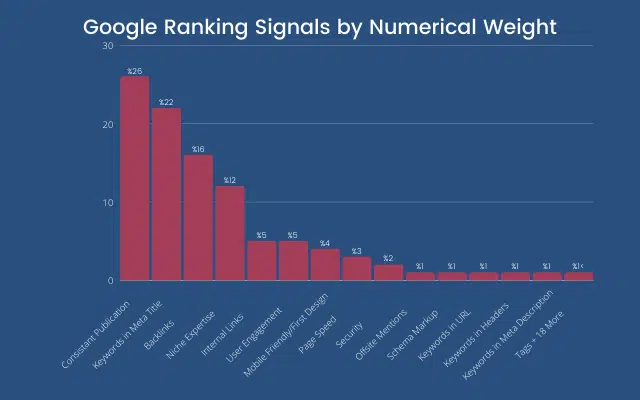
Instead, they can be grouped and optimized through an SEO audit, which isolates and utilizes the ranking signals most relevant for your site’s performance. In an increasingly competitive eCommerce space, the more comprehensive the audit, the more effective the improvements.
Many of the same principles discussed here also apply to a general audit. However, a retail SEO audit must also take unique factors into consideration.
Ecommerce On-Page SEO Audit
On-page SEO is impacted by any changes made to a site’s visible content with the intent of improving its visibility in search results. An on-page SEO audit determines how well a site’s pages can be expected to rank in search results based on primary factors evaluated by the algorithm.
Recommended Tools:
Evaluate Keyword Strategy
Keywords are the primary target for search engine algorithms as they attempt to connect a query with a result. By using the right keywords in the right way, your eCommerce site will trigger a higher-ranking search result than your competition, leading to more leads, visibility, clicks, and sales.

A proper blog post checklist looks at not only how to use keywords effectively to attract Google, but also how to utilize the keywords in your eCommerce sector to attract your target audience. The beginner’s mistake with keyword strategies is thinking that prioritizing the most searched keywords always increases sales. However, maximizing the number of leads is not as important as maximizing the relevance of the leads to the products and services you offer.
Here are the main elements that should be evaluated in your eCommerce keyword strategy:
Current Rankings
When analyzing keyword performance, a successful SEO audit considers your site’s performance as well as the performance of the industry. Examining the traffic of the pages currently ranked in your target keywords using one of the above tools can help optimize your site’s keyword strategy.
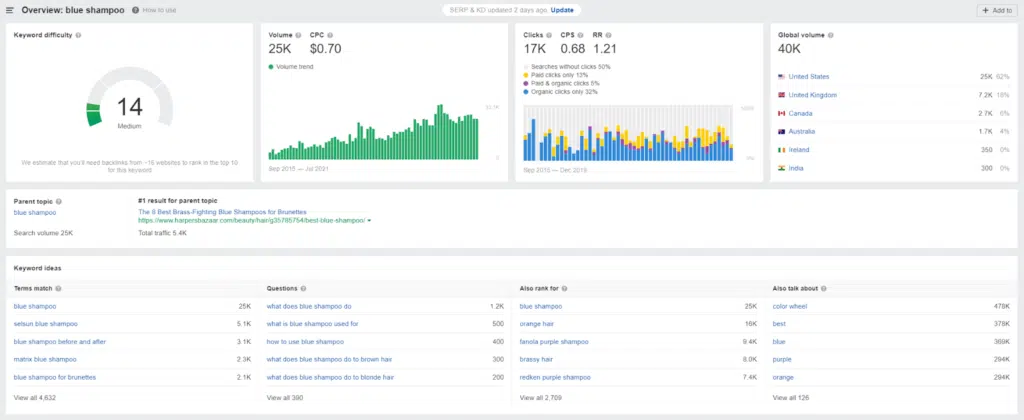
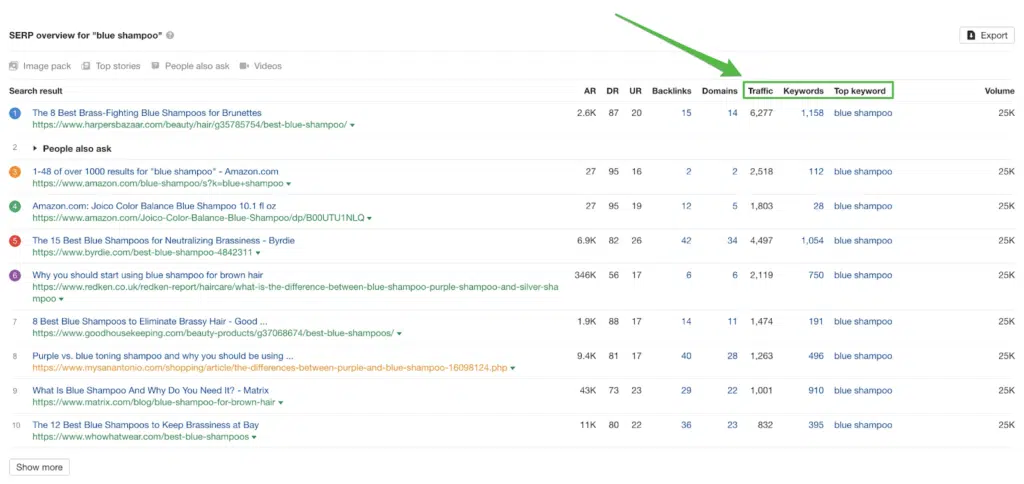
For example, you can look at the current highest-ranked pages and see their monthly traffic, their backlinks, and the number of keywords they rank in. These rankings demonstrate keyword opportunities beyond simply comparing overall search volume. You can learn not only how to prioritize your most relevant keywords but also how to target the ones your competition missed.
Competitor Rankings
In eCommerce, where your competition’s profits cut into your own, observing and responding to your competition’s performance is vital. Remember that “competition” in keywords doesn’t refer only to your brand competition but to who outranks you in search results.
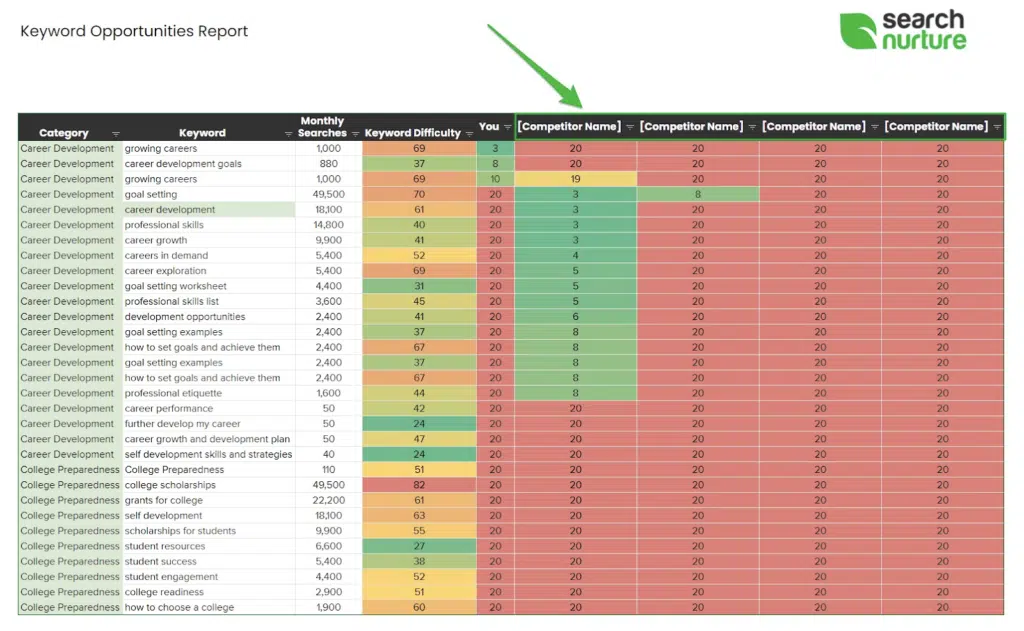
Depending on your marketing budget, you can use your competitor’s rankings to strategize in two different ways. You can set the most valuable words that they already rank in as a priority, creating competition. Or you can find the highest-volume keywords that your competitors have ignored.
Relevant Keywords
High-volume keywords do not always equate directly with an increase in sales. Obsessing over keywords that are broadly searched by general consumers and which are the most competitive in your eCommerce sector can throw off your keyword strategy.
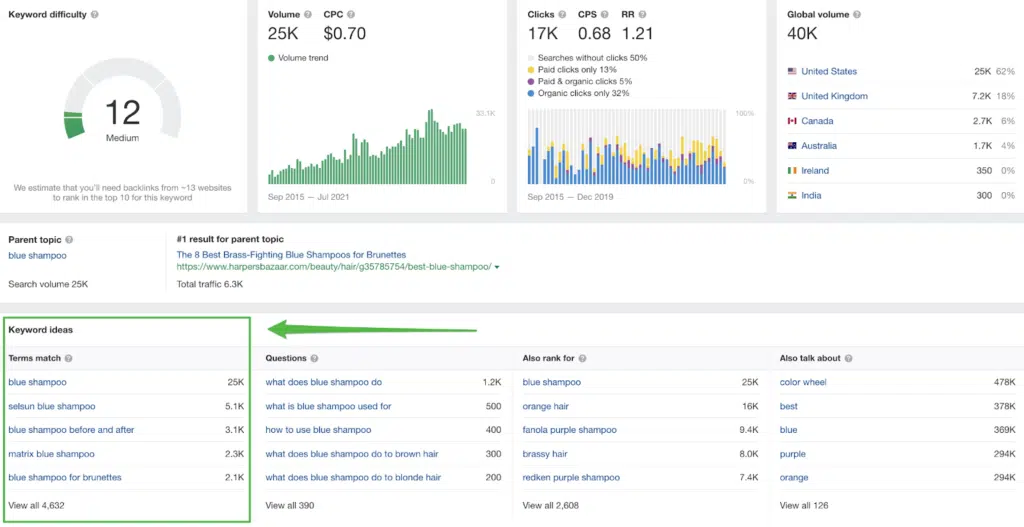
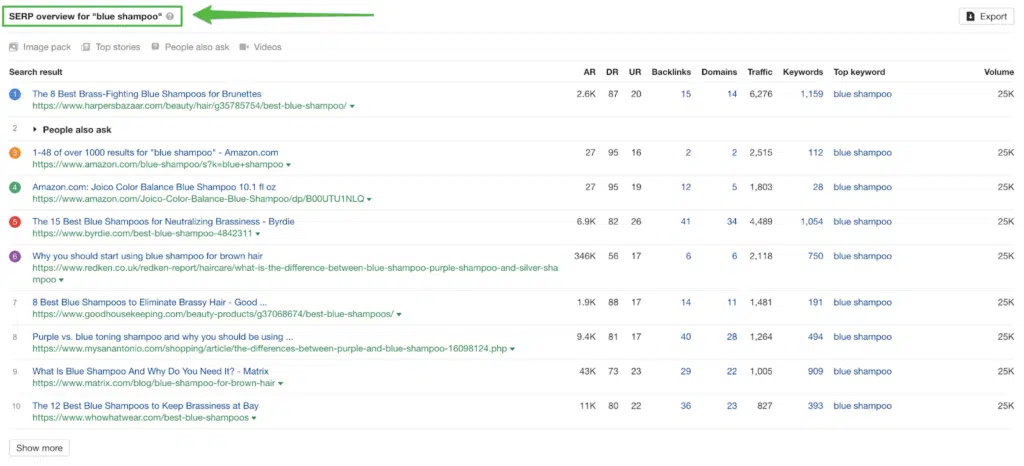
Focusing on the highest volume can cause most small to mid-sized eCommerce businesses to lose sight of how keyword relevance drives sales more than volume. When keywords are more relevant to your target audience, you may not accumulate as much traffic, but the traffic you do acquire will be more likely to convert.
Search Intent
Not all the traffic at your eCommerce site has the single-minded purpose of buying your products. Pages with a demanding, conversion-focused design that contain little information will not attract Google’s algorithm. Since some consumers only want information, Google has developed ways of prioritizing the depth of a page’s content over its CTAs.
Keyword Difficulty
Keyword difficulty tells you how difficult and expensive it will be to rank in a certain keyword. In highly competitive eCommerce industries, it is crucial to prioritize keywords with a difficulty level within your means. Focusing on the most searched keywords could waste your marketing budget on words you could never hope to rank for.
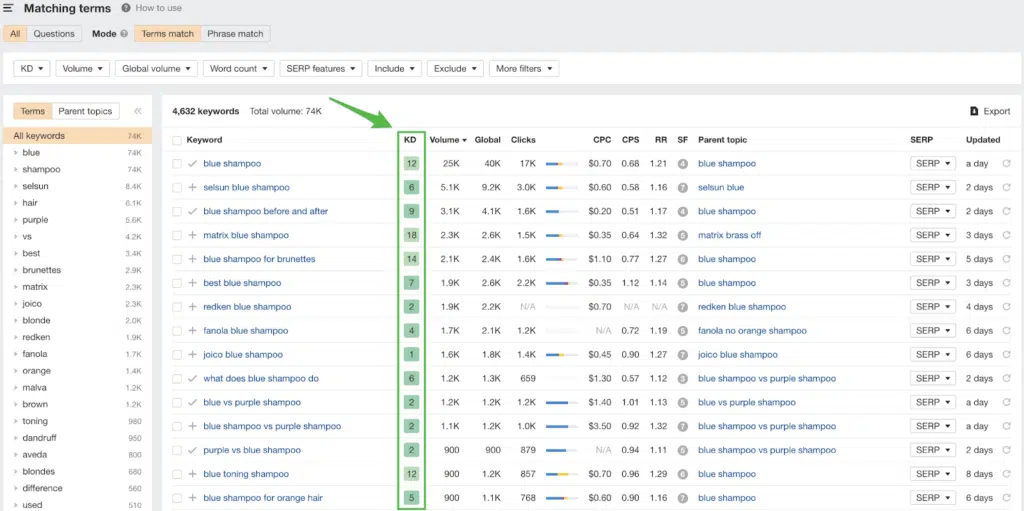
For instance, if you are a new eCommerce electronics store, you will not be able to rank for “Microsoft,” even though that keyword may have the highest search volume. Rather than compete for it against Amazon and eBay, find the most relevant words you can rank in.
Keyword Search Volume
Google Keyword Planner allows advertisers to research the organic keywords that rank in their industries by analyzing the competitiveness of the keywords, including their relevance and popularity. Since the difference between “buy running shoes store” and “tennis shoes online store” could be huge, your use of keyword evaluation tools should be extensive in any strategy that hopes to increase visibility.
Title Tags and Meta Descriptions
Social media sites and search engines organize posts using title tags to track content. Search engines thrive on title tags to quickly determine the content of a page. Therefore, an eCommerce site can strategically use primary keywords in a page’s title tag to improve its SEO.

Meta descriptions work in a similar way, where primary keywords can work magic on a page’s impressions by attracting the search engine to your description. However, it’s worth noting that these are not as significant as they were in the earlier days of search engines.
Header Tags
Pages on a website should have header tags, or H1 headers, to convince search engine algorithms that the page is organized. Google favors structured information with well-placed keywords in the header tags over unorganized filler text.
URL
Keywords in the site’s URL can also make a page more relevant. The search algorithm is looking for target keywords everywhere. Refrain from using the words too often (known as “keyword stuffing”) but place them strategically in the areas described above, as well as the URL.
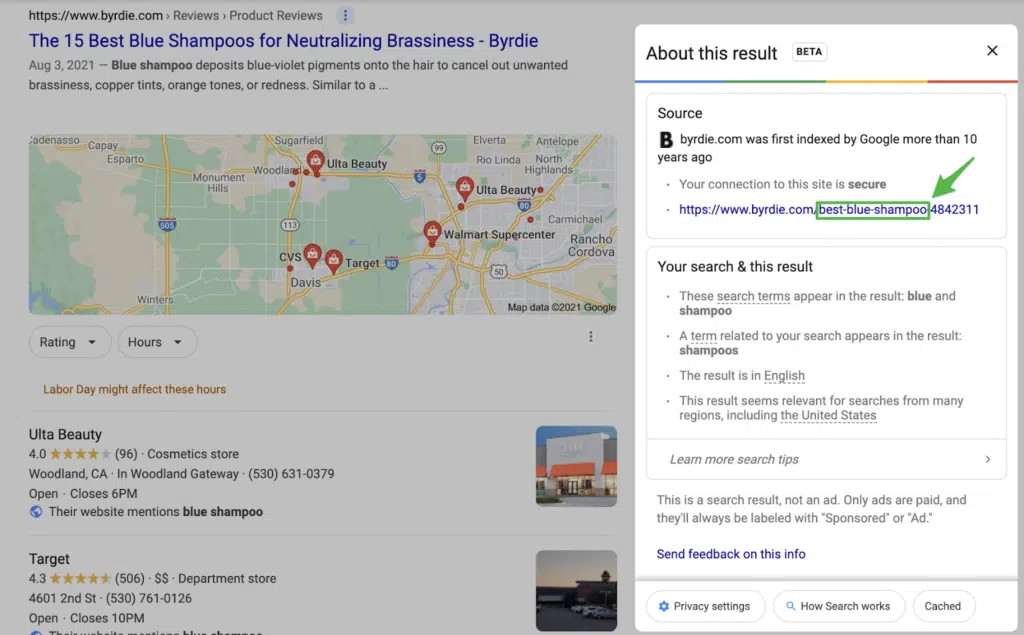
Ecommerce Off-Page SEO Audit
Off-page SEO concerns the aspects of your site that you cannot change or see. These elements still affect your site’s search engine ranking, but new site owners often wonder how to affect the outcome.
Recommended Tools:
- Ahrefs
- Google Search
- Web Archive
- Raven
Evaluate Backlinks
Backlinks are the most vital metric in measuring a site’s off-page SEO. They are the links that lead users from other sites to yours. Google considers backlinks when ranking search results under the assumption that when sites link to other sites, the destinations are more trustworthy, useful, and comprehensive.
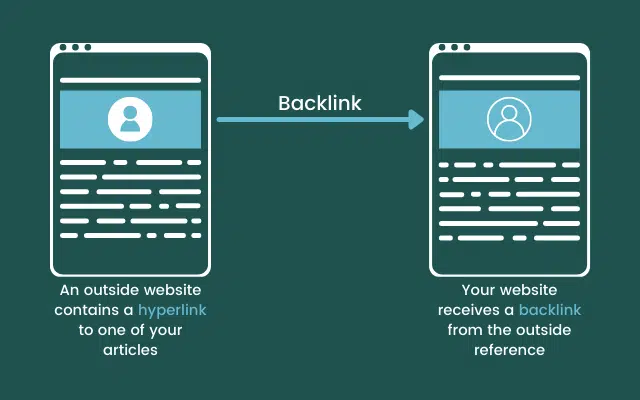
Using the above tools like Ahrefs “backlink checker,” you can view which sites link to yours. The results will be diverse, both from authoritative sites linking to your products as well as spam sites trying to game the algorithm by spamming links.
These spam links will hurt your site’s credibility, which is why many eCommerce businesses use a backlink checker to identify the sources of these links and contact their owners to remove them. Likewise, contacting the owners of valid backlinks is useful since creators of relevant content are always looking for credible sources to build a network of links.
Therefore, an off-page SEO strategy should include an invitation to authoritative sites to link to your pages. The more diverse and credible your catalog of links, the more your off-page SEO will improve your search rankings.
Social Profiles
As an eCommerce site owner, you likely already know the impact of social media shares on your profits. This principle carries over to your off-page SEO audit. Sharing your website pages on social media creates a flow of traffic and encourages linking, which shows Google that your site is more credible.
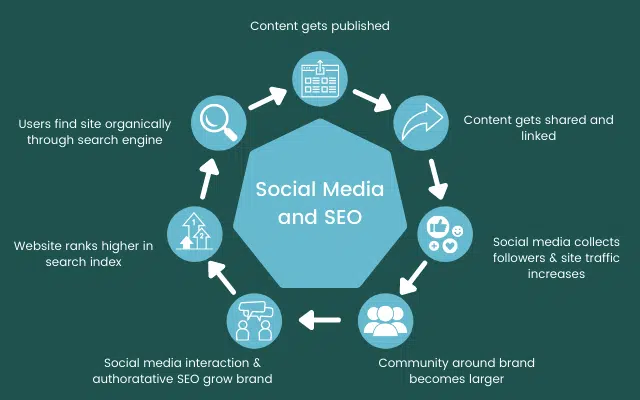
Share links to new content and products to keep the posts fresh. Increase the number of these links but also evaluate their performance with the tools listed above. Crunch the analytics to see which links drive the most clicks so you can focus your efforts on the links that work.
Ecommerce Technical SEO Audit
Your site’s operations affect how search engines find you. With dozens of pages operating at once, including your product pages, landing pages, and more, an eCommerce site should not ignore the technical operations when evaluating its site’s SEO. Therefore, a technical SEO audit should factor into your strategy.
Recommended Tools:
- Google Search Console
- GTmetrix
- SEO Review Tools
Google Analytics/Google Search Console Setup
Google Search Console gives businesses the ability to evaluate their keyword traffic based on metrics such as click-through rate (CTR), impressions, clicks, and search rankings. These reports offer useful data-driven insights into which keywords are most relevant to your audience, the differences between your site’s performance on mobile vs desktop, and more.
After logging in with a Google Analytics account or even a generic Google username, you can “Add a Property.” This allows you to enter your eCommerce site’s URL and begin the verification process. Follow the directions to verify ownership, either through an HTML, hosting provider, or a Google Analytics Tracking ID.
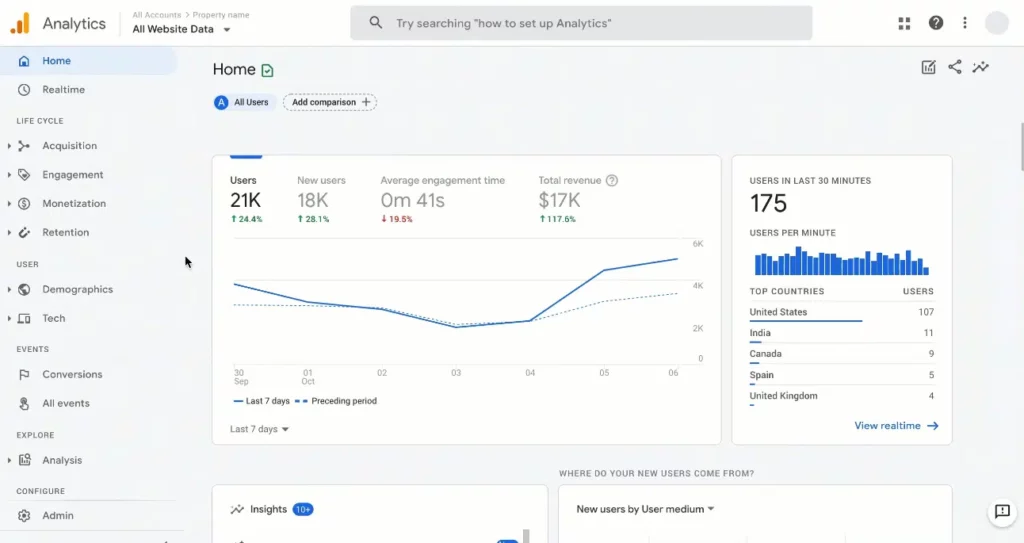
From there, you have to wait a week to start seeing reports. However, once they start coming in, you can begin examining the technical SEO audit, which includes ways to optimize your site’s performance and fix any issues.
Site Structure
A site’s structure can affect its SEO by enabling or stifling the flow of traffic from one page to another. Internal links drive users between pages, which is especially important for eCommerce sites. Product pages should link to similar products to keep customers shopping, rather than leave them at a dead-end. Here’s a great example by John Frieda:

A good rule of thumb is to design the site’s structure so that any page can be reached from any other page in 3 clicks or fewer.
Site Crawlability
Search engines use bots called “web crawlers” to travel down links to find new webpages to index. Your site’s crawlability describes how easy it is for these bots to access your content so they can do that. When a site is structured properly with internal links that form a web between its pages, web crawlers can easily get to them all. This makes your site’s pages easy to index.
When pages have dead ends with no links or broken links that lead nowhere, this leads to issues with crawlability, which equates to search engines not being able to find your individual product pages for their search results. Ensuring that pages link to each other and that all the links are live helps you maintain your crawlability.
Robots.txt
Robot.txt files communicate to those web crawlers to tell them to stay away from certain pages. You may be wondering why you would want to do that.
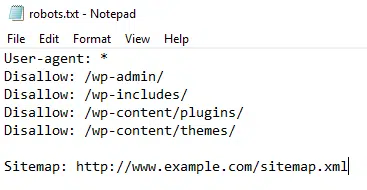
If you run a large eCommerce site, content can become outdated. Crawling to everything in that case could take bandwidth away from more relevant pages. Additionally, when left to their own devices, web crawlers may link search engine results to your products, but also your admin login page, wish list, or even page test links. An optimized Robots.txt file prevents users from ending up on these irrelevant pages.
Site Indexability
Indexability, like crawlability, can be improved by correcting server errors and improving your site’s internal linking structure. However, indexability refers specifically to how well a search engine can analyze and index your site. So it’s possible that even if the bots can crawl your pages, a server error or linking issue could still prevent them from indexing it. A technical SEO audit can eliminate those issues.
XML Sitemap
The XML sitemap file describes technical information for all the content on your site, from pages to videos, as well as how they connect to each other. The sitemap provides an easy way for Google to crawl your site, with which it can gather most of the important information it needs to begin indexing your pages.
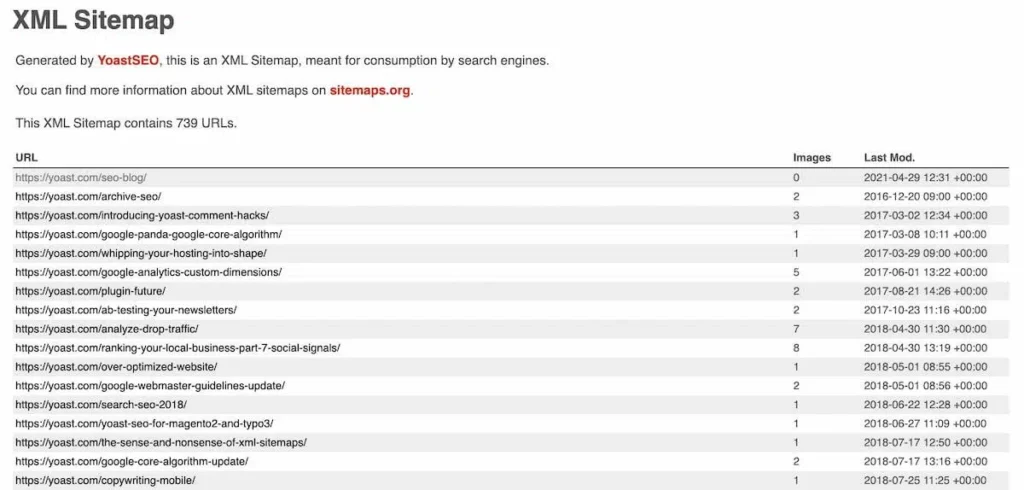
Credit: Yoast
Conversely, this means that an unoptimized sitemap leads to indexing issues. Large eCommerce stores especially need to make use of a good sitemap to specifically list pages they don’t want Google to miss. Even if your site has gaps in its linking structure, you can use a sitemap to direct the crawlers to those pages.
HTTPS/HTTP
HTTPS provides secure hosting, though many sites begin as HTTP. After transferring to HTTPS, sites can accidentally create two versions that confuse search engines and misdirect links. Ensure that the HTTP site always redirects to the HTTPS version to maintain the value of your backlinks.

Page Speed
Page speed is a clear metric that eCommerce sites should address to optimize their site’s technical performance. Every page type from landing pages to product pages should be checked for performance. Over-rendered scripts or uncompressed images may be the source of low page speed, which is why content management systems can be helpful in handling the technical side of site maintenance.
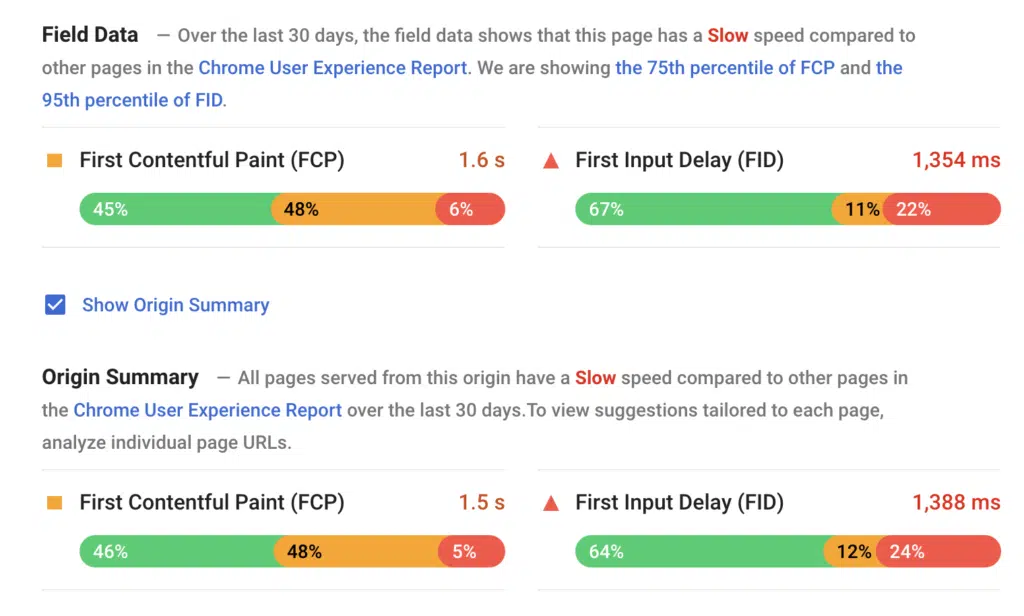
Mobile-Friendly
Since 73% of eCommerce shoppers use mobile devices to buy products, mobile-friendly design is even more important for stores than for normal sites. Account for mobile screens when designing your site architecture. Even the location of vital information should change depending on where you expect users to be looking and where their thumbs are located.

Google conducts a mobile friendliness test to index sites for mobile searches as part of the Google Page Experience. A design that is responsive to mobile users will rank higher by default than its competition due to the rising importance of mobile shoppers.
Broken Pages
Broken links that lead to Page Not Found errors can disrupt the user experience and lower your site’s ranking. For an eCommerce site, this can turn an interested shopper into someone who bounces to another store.
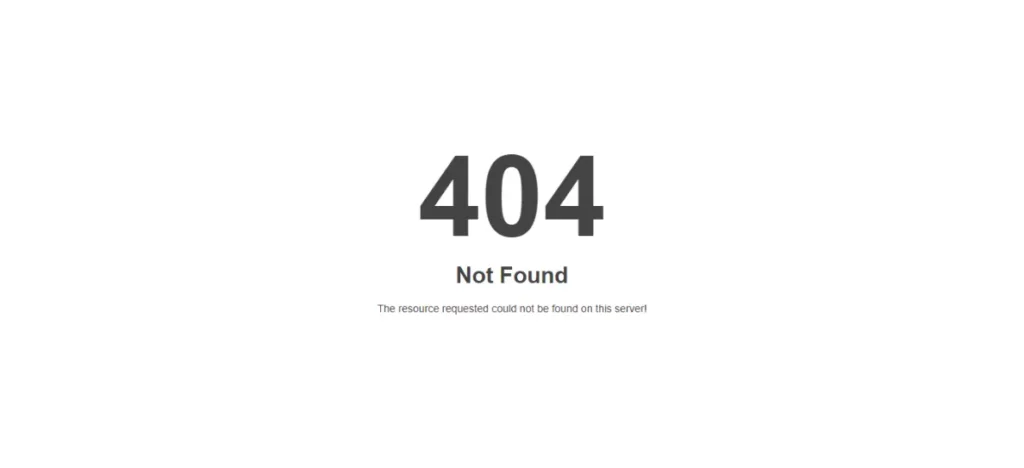
When your pages move or get deleted, this can cause your internal links to break. Find broken links using tools like Google Search Console, either redirecting them to live pages or getting rid of them.
Security
Security is vital for the retail SEO audit of an eCommerce store since consumer trust defines your profitability. Customers must input their card and personal information into your site, meaning that unsecure sites, which their browsers inform them of, will be far less likely to earn their purchases.

Purchase an SSL or Secure Sockets Layer certificate to protect consumer information on your site. The symbol of a closed padlock at the top of their browser will tell users that your site can be trusted.
Get Started with Your Ecommerce SEO Audit Now …
An eCommerce SEO audit allows a business to evaluate the current state of their site’s structure, visibility, performance, and more. This allows data to influence a site owner’s decision to optimize their pages based on the results of the SEO audit and improve their marketing strategy in an increasingly competitive eCommerce market.
Learn more about our enterprise SEO services. And if you’re managing an e-commerce website, consider letting Search Nurture look under your site’s hood — we’ll deliver you new opportunities that you didn’t know existed.






